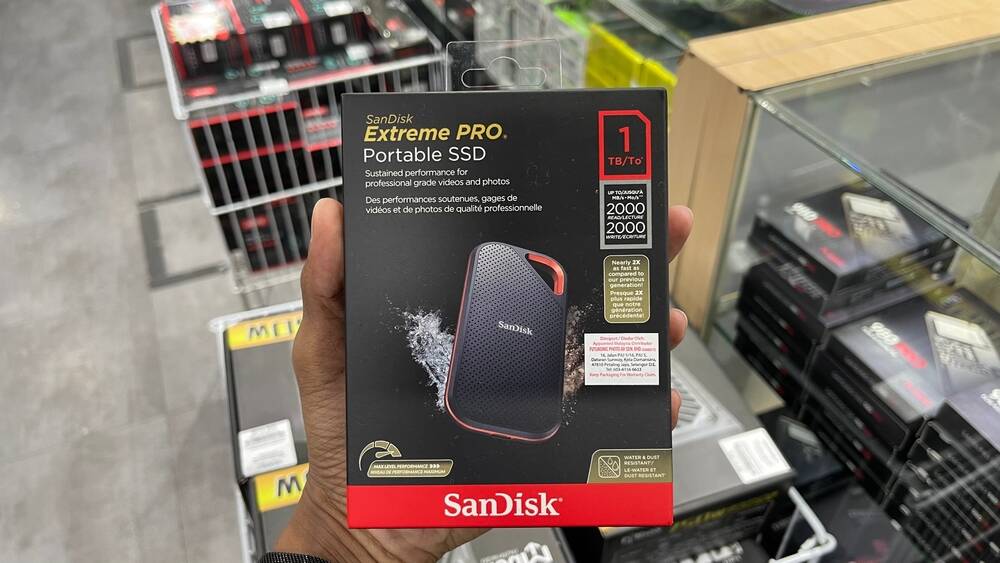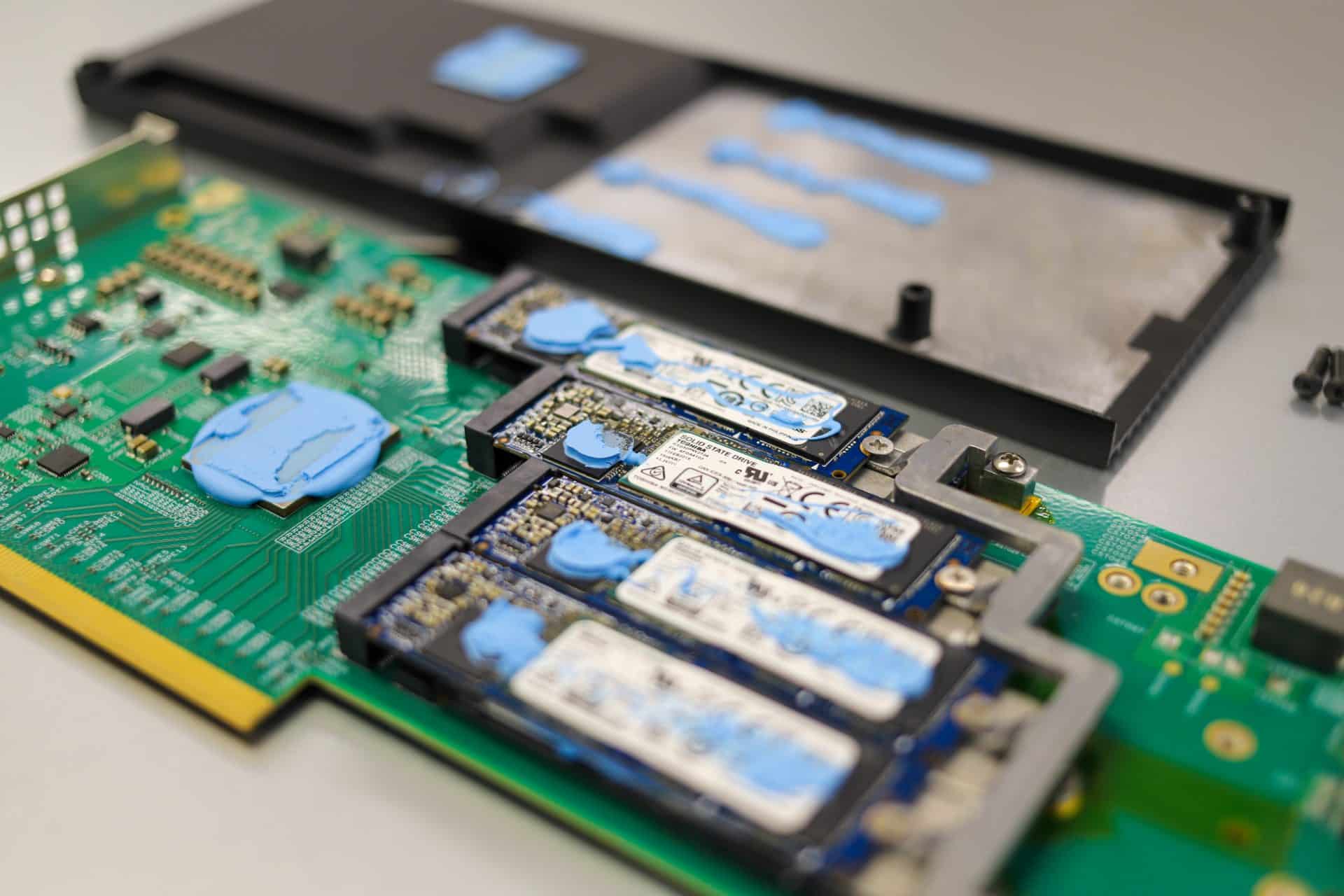Dead hard drive data recovery
- Thread starter guerney
- Start date
You're absolutely right @oyster , but it happened quite suddenly and it hadn't got to scheduled backup time. There were occasional warning "Plink" sounds for weeks, which I mistook for something else, because I've usually got three PCs and other kit switched on most of the time.
If I can get to the stage where the data is recoverable by Easeus, I'll buy it.
If I can get to the stage where the data is recoverable by Easeus, I'll buy it.
I've got several surge protectors, some in series, which seem to have protected them so far...(A bolt of lightning could destroy every data device in a house.)
On other PCs, I have cheapo Western Digital Blues RAID mirrored, so if one fails the other is intact. But not on that PC. It's quite rare that I have to consider trying such data recovery. Mind you, it gives me the opportunity to swap out the motherboard for a better one (Asus), which I've been meaning to do for some time.But the proper answer is to avoid relying on any single device.
I now only have one spinning disc that I use. Several in cupboards, etc.On other PCs, I have cheapo Western Digital Blues RAID mirrored, so if one fails the other is intact. But not on that PC. It's quite rare that I have to consider trying such data recovery. Mind you, it gives me the opportunity to swap out the motherboard for a better one (Asus), which I've been meaning to do for some time.
That is the second (1 TB) drive in a Windows PC which I only keep for a couple of minor reasons. (Has a 256 GB SSD as prime drive.) Everything else is some form of SSD.
I'm still not convinced about the long term reliability of equivalently priced SSDs yet. After looking at various SSDs, I'm about to order some number of Western Digital Blacks, because their lifespan in my experience is astonishing, compared to any other drive I've used. WD blues are trash.I now only have one spinning disc that I use. Several in cupboards, etc.
That is the second (1 TB) drive in a Windows PC which I only keep for a couple of minor reasons. (Has a 256 GB SSD as prime drive.) Everything else is some form of SSD.
That data on the borked WD blue still needs rescuing - I may first change the tension and shape of the drive case by tightening and loosening bolts a tiny bit, to see if doing so unsticks the R/W heads or in any way helps the motor. If doing so does, I'll equalise bolt tension and proceed to data rescue. If not, I'll have no option but to operate.
The data on those will demagnetise eventually, but might still be retrived with specialist deep scanning software. I use old drives for rapid access to data I already have backed up onto cd/dvd - connect via USB cable, decompress and mount .iso etc.I now only have one spinning disc that I use. Several in cupboards, etc.
I had assumed the system drive on that i7 was a WD Blue, like the other two 6gb drives it contains, but upon inspection this morning ready to disasemble and attempt data recovery... it's a Western Digital Black! AND UNDER WARRANTY! You get 5 years replacement under warranty with WD Black hard disk drives. Whew! 
Still, out of dozens of WD Blacks I've owned, this failed well before it's time (warranty expires in June) - they've all lasted about a decade, apart from this one purchased from Amazon... possibly got kicked about by Amazon warehouse apes. Glad I bought the latest batch (at greater expense) from Western Digital direct.
Still, out of dozens of WD Blacks I've owned, this failed well before it's time (warranty expires in June) - they've all lasted about a decade, apart from this one purchased from Amazon... possibly got kicked about by Amazon warehouse apes. Glad I bought the latest batch (at greater expense) from Western Digital direct.
I use SSDs for both Windows and data and they are lasting almost a decade. Today I've just replaced two Kingstons in my desktop after 9 years 4 months of all day, every day use, though only the Windows 7 drive was beginning to fail but still fully operational. The data SSD is still perfectly ok and transferred everything fast and flawlessly to the new SSD.I had assumed the system drive on that i7 was a WD Blue, like the other two 6gb drives it contains, but upon inspection this morning ready to disasemble and attempt data recovery... it's a Western Digital Black! AND UNDER WARRANTY! You get 5 years replacement under warranty with WD Black hard disk drives. Whew!
Still, out of dozens of WD Blacks I've owned, this failed well before it's time (warranty expires in June) - they've all lasted about a decade, apart from this one purchased from Amazon... possibly got kicked about by Amazon warehouse apes. Glad I bought the latest batch (at greater expense) from Western Digital direct.
I even have one of my three full backups on a portable SSD and one on a USB drive, only the remaining third backup on a mechanical drive. Guess which one once let me down? Yep, it was that mechanical disc.
.
Last edited:
A couple of months ago I bought a pair of Samsung EVO 870 1TBs to attempt thrashing to death, rather impressively they have survived thus far.I use SSDs for both Windows and data and they are lasting amost decade. Today I've just replaced two Kingstons in my desktop after 9 years 4 months of all day, every day use, though only the Windows 7 drive was beginning to fail but still fully operational. The data SSD is still perfectly ok and transferred everything fast and flawlessly to the new SSD.
I even have one of my three full backups on a portable SSD and one on a USB drive, only the remaining third backup on a mechanical drive. Guess which one once let me down? Yep, it was that mechanical disc.
.
For long term backup of important data, I hope you use DVDROMs, BDROM - ideally M-Disc, which has been tested as readable after "thousands" of years... presumably using a time machine.
Re: The hard drive failure mentioned in this thread: I could have got a replacement under warranty, but it contained too much client dats to trust Western Digital technicians with. I haven't swapped the hard drive control board with another of the same type and generation yet, mostly because I've not needed to, but will see if that works at some point. I have rather a lot of old Western Digital Blacks kicking around and board versions. I've gone off Western Digital. Their QC has gone to the dogs at the new manufacturing facilities, and not just with their SSDs.
Western Digital sued over claims of data-trashing SanDisk, My Passport SSDs
Drives are anything but solid, allegedly

Western Digital sued over SanDisk SSD data-loss claims
Drives are anything but solid, allegedly
Last edited:

Liqid Element LQD4500 Review (Honey Badger)
The Liqid Element LQD4500 PCIe AIC SSD is able to bring a lot of capacity and tremendous performance in a small footprint.
I use a program called ZAR (Zero Assumption Recovery). £35 in 2008; lifetime price, not rental, including all updates till they finally stopped support a year or so ago. Quite dated but very effective. It was much better than my experiences with Easeus for recovery, though I still use Easeus Data Backup.If I can get to the stage where the data is recoverable by Easeus, I'll buy it.
Zar is no longer available, but turned into the more expensive but still reasonably priced Klennet Recovery https://www.klennet.com/klennet-recovery/
I've also seen Disk Drill well recommended but never tried it. https://www.cleverfiles.com/data-recovery-software.html
~~~
The worst recovery I had to do was down to an HP printer driver. It wasn't even recovery, just replacing a hard drive with an SSD, the machine had got very slow. After uninstalling the printer. the driver had made a new log entry (new file of 20 bytes or so, not extending the old log) every minute the machine was on to say it couldn't find the printer. The result was a single NTFS directory containing well over 1 million files. Trying to do anything with that hard drive made it look as if it had failed, it just took so long to process anything to do with that directory.
That was a truly troublesome bug, which eventually got fixed, plagued our many PCs attached to Postscript printers.The worst recovery I had to do was down to an HP printer driver. It wasn't even recovery, just replacing a hard drive with an SSD, the machine had got very slow. After uninstalling the printer. the driver had made a new log entry (new file of 20 bytes or so, not extending the old log) every minute the machine was on to say it couldn't find the printer. The result was a single NTFS directory containing well over 1 million files. Trying to do anything with that hard drive made it look as if it had failed, it just took so long to process anything to do with that directory.

